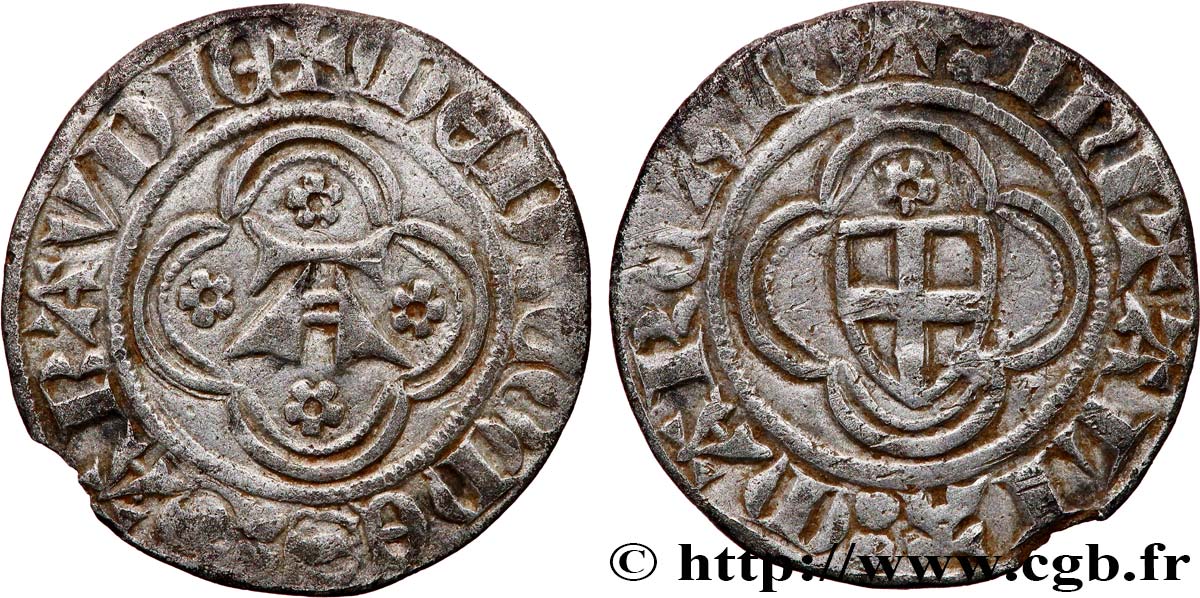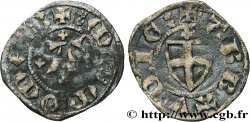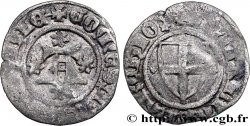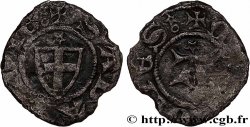bfe_749244 - SAVOY - COUNTY OF SAVOY - AMADEUS VI Obole blanche (Obolo bianco)
1 100.00 €(Approx. 1265.00$ | 935.00£)
Quantity
Add to your cart

Type : Obole blanche (Obolo bianco)
Date: n.d.
Mint name / Town : Chambéry ou Pont-d’Ain
Metal : billon
Diameter : 21 mm
Orientation dies : 11 h.
Weight : 1,62 g.
Rarity : R3
Coments on the condition:
Cette obole est frappée sur un flan assez large présentant un petit défaut de flan à 5 heures au revers. Reliefs nets
Catalogue references :
Obverse
Obverse legend : MED: COMES: SABAVDIE, (PONCTUATION PAR DOUBLE ANNELET).
Obverse description : A entre quatre roses à cinq pétales dans un double quadrilobe.
Obverse translation : (Amédée, comte de Savoie).
Reverse
Reverse legend : + : IN ITALIA: MARCHIO, (PONCTUATION PAR DOUBLE ANNELET).
Reverse description : Écu de Savoie sous une rose à cinq pétales dans un double quadrilobe.
Commentary
Ce rare type monétaire est appelée “Obole blanche” (Obolo bianco). Avec deux annelets superposés en ponctuation cette monnaie est attribuable à l’atelier de Chambéry ou Pont-d’Ain.








 Report a mistake
Report a mistake Print the page
Print the page Share my selection
Share my selection Ask a question
Ask a question Consign / sell
Consign / sell
 Full data
Full data









